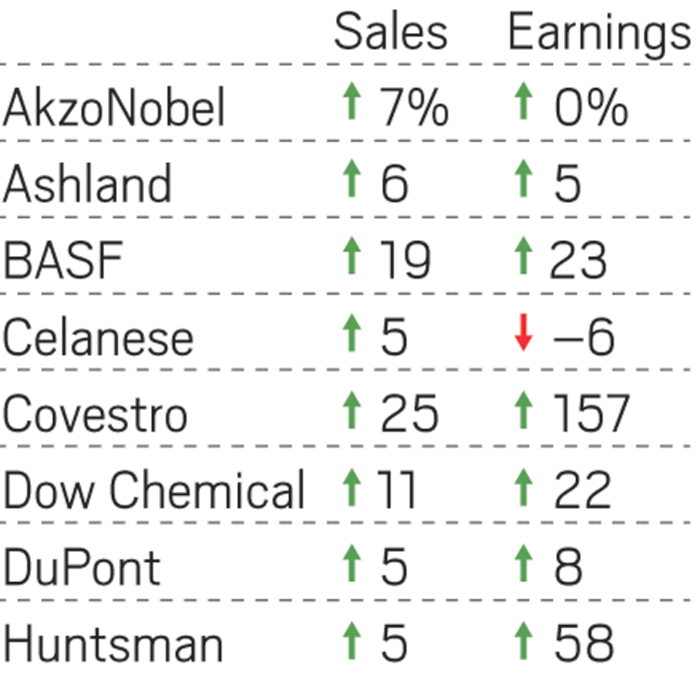Advertisement
Grab your lab coat. Let's get started
Welcome!
Welcome!
Create an account below to get 6 C&EN articles per month, receive newsletters and more - all free.
It seems this is your first time logging in online. Please enter the following information to continue.
As an ACS member you automatically get access to this site. All we need is few more details to create your reading experience.
Not you? Sign in with a different account.
Not you? Sign in with a different account.
ERROR 1
ERROR 1
ERROR 2
ERROR 2
ERROR 2
ERROR 2
ERROR 2
Password and Confirm password must match.
If you have an ACS member number, please enter it here so we can link this account to your membership. (optional)
ERROR 2
ACS values your privacy. By submitting your information, you are gaining access to C&EN and subscribing to our weekly newsletter. We use the information you provide to make your reading experience better, and we will never sell your data to third party members.
Business
DuPont Launches Streamlining Plan
Effort is wide-ranging but won't involve wholesale job cuts
by Michael McCoy
November 8, 2005
DuPont is undertaking productivity and cost improvement measures that it says will yield $2 billion in savings. While the program will involve some employee redeployment, the company says broad-based job cutting is not required.
Speaking at a briefing for securities analysts and investors earlier this week, CEO Charles O. Holliday Jr. acknowledged that DuPont is behind its industry peers in taking such streamlining steps. A study conducted by the Hackett Group, a benchmarking firm, found that DuPonts human resources staffing is 20% higher than at other large companies, while its information technology cost per user is 30% higher.
The productivity plan includes a $1.1 billion, 13-year contract under which the customer service firm Convergys will provide human resources services to DuPont. Other plan elements include streamlining of procurement and accounts payable systems.
Overall, said Richard R. Goodmanson, DuPonts chief operating officer, some 4,000 of DuPonts 60,000 employees worldwide would be redeployed under the plan through attrition, contractor displacement, and reassignment. Within three years, he predicted, DuPont will see a one-time savings of $1 billion through a reduction in working capital and another $1 billion in annual savings through cost improvements.
The plan also calls for redeployment of capital to businesses that have a return on net assets of 12% or better. Chief Financial Officer Gary M. Pfieffer said some businesses may be sold as a result, although he wouldnt identify candidates.
Thomas M. Connelly Jr., DuPonts chief science and technology officer, told the analysts that DuPont will accelerate its investment in high-tech fields, such as biobased and photovoltaic materials, and restrict investment in commodity polymers and coatings. DuPont got 30% of its 2004 revenue from products five years old or less, and Connelly expects that 34% of 2006 sales will be from such products.

Thomas M. Connelly Jr., DuPonts chief science and technology officer, told the analysts that DuPont will accelerate its investment in high-tech fields, such as biobased and photovoltaic materials, and restrict investment in commodity polymers and coatings. DuPont got 30% of its 2004 revenue from products five years old or less, and Connelly expects that 34% of 2006 sales will be from such products.
In tandem with the growth push, DuPont is elevating its biobased materials business to the status of a technology platform. DuPont's most visible biomaterials foray is into the glucose-based polyester intermediate propanediol, for which it will open a plant in the first half of 2006. But Connelly said the company is eyeing a range of opportunities that could generate annual sales of $3 billion-plus by 2012.
Among them, he said, are three biofuel projects with a combined sales potential of more than $1 billion per year. DuPont is also developing biosurfaces technology that uses peptides or proteins to anchor desired attributes to surfaces. Connelly sees opportunities in skin, hair, oral, and home care worth more than $300 million.
Stock analysts generally welcomed DuPont's plans, although their comments at the meeting indicated some impatience with the company's cost-cutting efforts to date. Merrill Lynch chemical analyst Donald D. Carson recently upgraded DuPont to a "buy," but he told clients in a note on the meeting that he had been "cautious about the stock, owing in part to a lack of focus on productivity improvement."






Join the conversation
Contact the reporter
Submit a Letter to the Editor for publication
Engage with us on Twitter